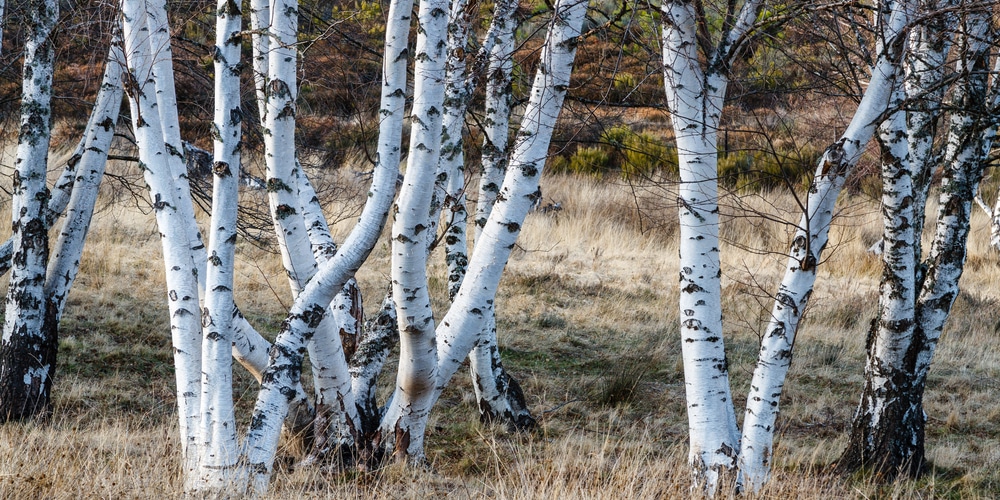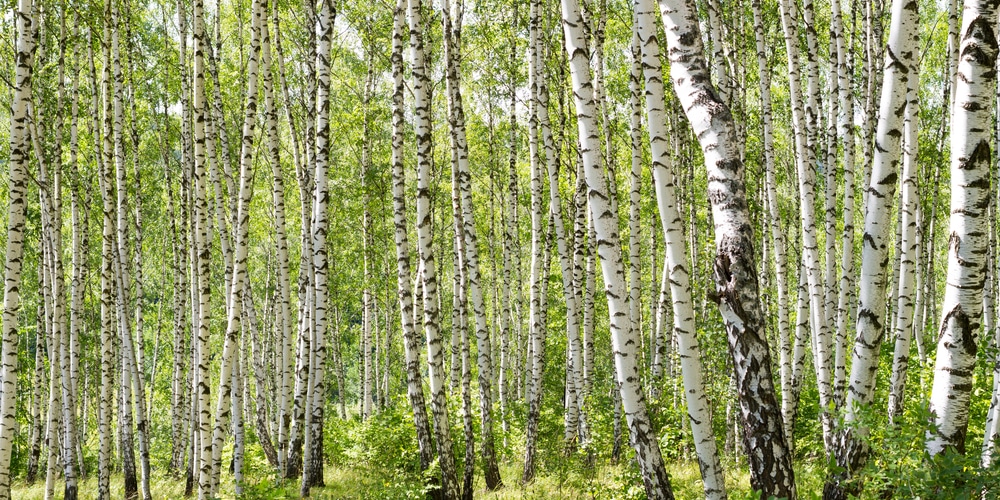Gray Birch trees are medium-sized deciduous that grow best in colder climates. If you are looking for a native tree to increase the aesthetics of your yard, this plant might be a suitable option.
These trees adapt to most soil conditions and, once established, don’t require much attention from your side.
But that doesn’t mean you can leave them unattended. Read on to learn more about taking care of your gray birch tree!
| Botanical Name | Betulia Popufolia |
| Common Name | Gray Birch Tree |
| Plant Type | Perennial deciduous lower |
| Flower Color | The tree produces both male and female flowers called catkins. The blooms are long and yellowish-brown in color and hang at the tips of the shoots. |
| Size When Mature | Between 20 to 30 feet tall, with a 15-inches wide trunk diameter. |
| Bloom Time | From April to May |
| Sun Requirements | Full Sun |
| USDA Hardiness Zones | 3-8 |
| Soil Range | Between 5.0 and 6.5 |
| Soil Type | Well-draining, better if slightly acidic |
| Water Needs | Medium |
| Native Area | North America |
What you Need to Know About Gray Birch Tree
Gray Birch trees are one of the over 30 species of gorgeous ornamental birch trees. Their striking appearance makes them popular choices in landscaping. These tree’s barks are eye-catching and will add a touch of elegance to any outdoor space.
Additionally, despite looking delicate, these trees are hardy and durable. However, contrary to other birch trees, which tend to live for centuries, this variety has a lifespan of about 30 years.
This tree produces both male and female blooms, meaning these plants are self-seeding. The flowers hang in groups of two to four catkins, hanging at the tip of the shoots. You can expect these trees to bloom between April and May.
Don’t worry about your kids or pets ingesting parts of this tree: it isn’t toxic and won’t cause any symptoms when ingested.
How to Care for Gray Birch Tree
We mentioned how Gray Birch Tree is relatively easy to care plant once established. But how can you recreate the optimal conditions for its growth in your garden? You’ll find all the information you need in the following sections!
Light
Plant this tree under the full sun to get the most out of this plant. Gray Birch will grow best in locations that receive between 4 and 6 hours of sunlight during the day.
Water and Soil Needs
Gray Birch Trees adapt to various soil conditions. However, they perform well in slightly acidic and well-drained substrates. They will grow even in dry soils that are low in nutrients.
Consider adding a layer of mulch around the trunk to increase water retention. Indeed, these trees grow faster with constant moisture. Water your plant two times a week during the hot summer months and reduce the frequency as the temperature lowers.
Temperature Requirements
These North American trees prefer low temperatures. However, they will adapt to various weather conditions. They will thrive in USDA hardiness zones between 3 and 8. However, don’t forget to protect them from frost if winters get extreme where you live.
Fertilizer
Gray Birch trees are not heavy feeders. However, if your substrate is poor in nutrients, you might have to amend it to enhance these trees’ growth. Don’t forget to do a soil test before adding any product to have a clear idea of what to choose.
Consider fertilizing them in late fall or early spring using a balanced, slow-release product rich in nitrogen and potassium. Alternatively, applying a layer of organic mulch might add the necessary nutrients to optimize growth.
Common Diseases
Overall, Gray Birch trees have a high tolerance to pests and diseases. However, keep an eye out for aphids, which might cause thinning on top your the tree, brown spots, or holes in the bark. We recommend you take action as soon as you notice something off with your plant to contain the infestation.
Also, don’t forget to prune your tree to encourage healthy growth and remove old branches. Doing so will also protect your tree from attacks from pests. Plus, it will increase aeration and limit the appearance of fungal infections.
Gray Birch Tree Propagation
You can propagate birch trees by stem or branch cuttings. Don’t forget to carry out a specific wounding technique that involves adding one-inch cuts into their bases to trigger the rooting process. Also, dip your cuttings in a rooting compound. We suggest you take them in the early spring, better if in the morning, to increase your chances of success.
Plant your cuttings in well-draining and fertile soil and bury the wounded ends up to half their lengths. To encourage rooting, keep your cuttings moist but not wet. Also, place them indoors, where they receive plenty of indirect light.
Related Article: 12 Trees With White Bark

